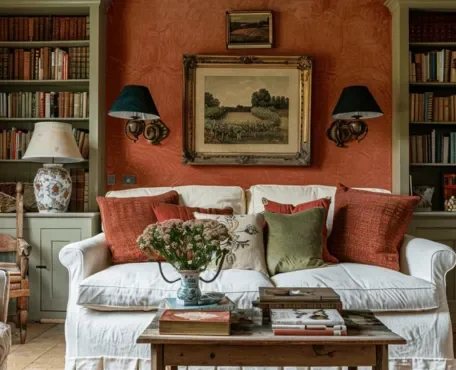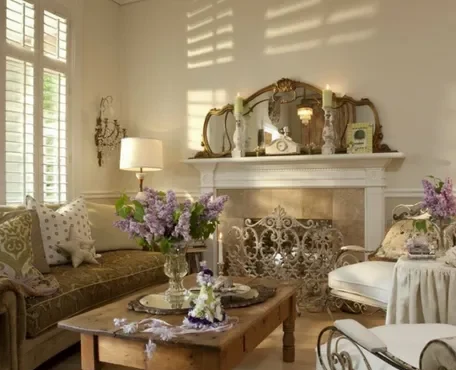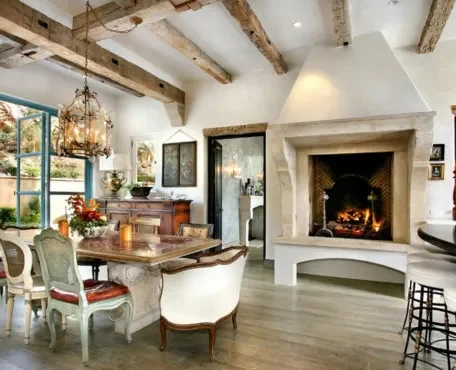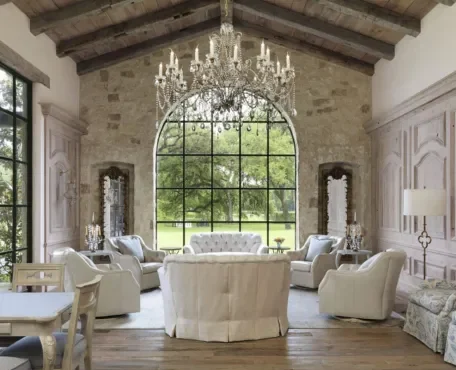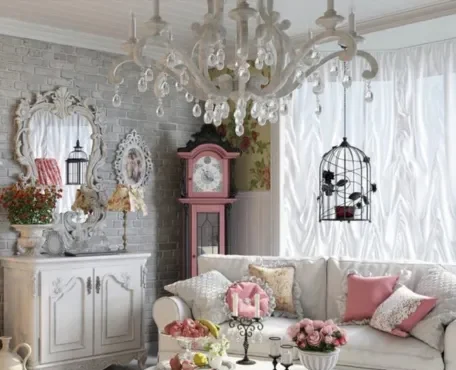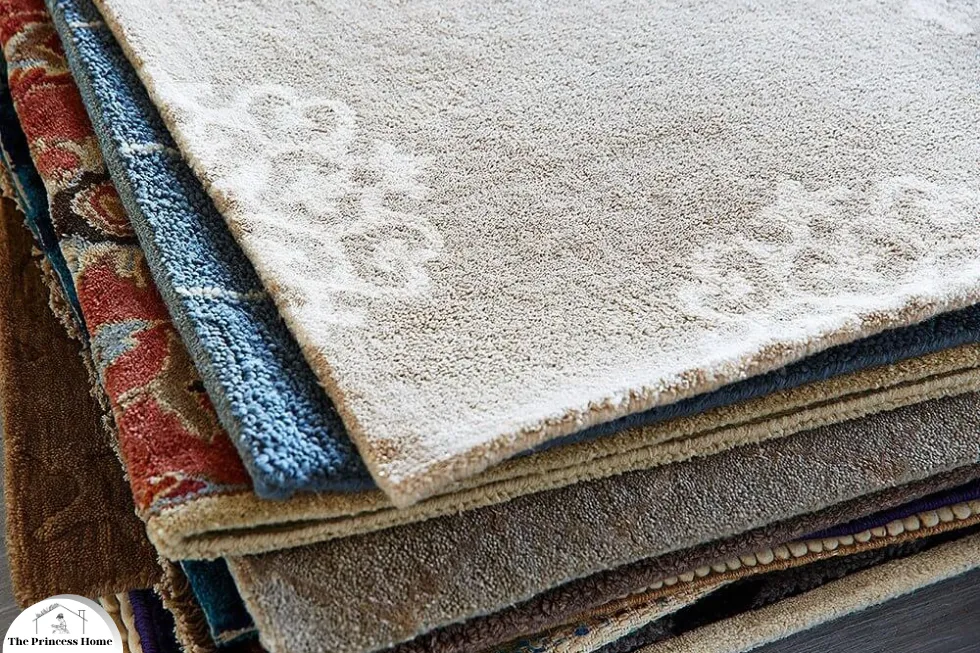
Rugs are a versatile and essential component of interior decor that can tie a room together and transform its ambiance. Whether you’re looking to add warmth, texture, or color to a space, choosing the right rug is crucial. However, the process of selecting the perfect rug can be a daunting task, as it involves considering various factors such as size, style, material, and budget.
Choosing the right rug is an important step in interior design, as it can enhance the comfort, aesthetics, and functionality of your space. By following the steps outlined in this guide, you’ll be well-equipped to make
In this comprehensive guide, we will walk you through the steps to choose the right rug for your home.
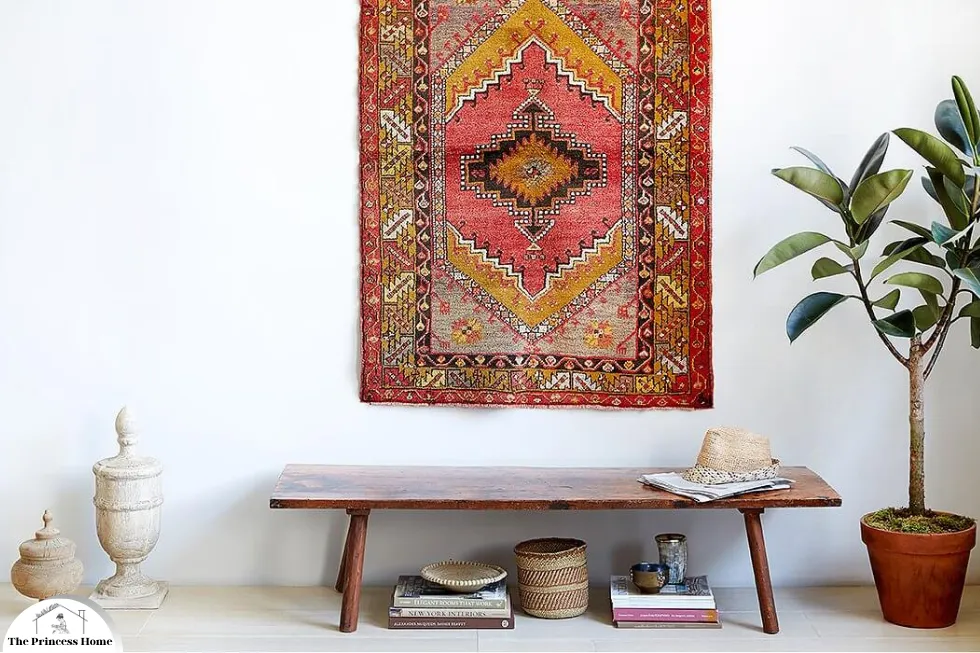
1*.Determine the Purpose
The first step in selecting the right rug is to define its purpose within your space. Are you looking to create a cozy, inviting atmosphere in your living room, or do you need a functional and easy-to-clean rug for a high-traffic area? Here are some common purposes for rugs:
Determining the purpose of a rug is essential before selecting the right one for your space. It helps ensure that the rug not only enhances the aesthetic appeal of the room but also meets your practical needs.
Here are some common purposes for rugs:
1.Creating a Cozy Atmosphere:
Rugs can add warmth and comfort to living rooms, bedrooms, or cozy reading nooks. They provide a soft and inviting surface underfoot, making the space feel more welcoming and comfortable.
2.Defining Areas:
Rugs can help define specific areas within a room, such as seating areas in a living room or dining areas in a kitchen. They visually anchor furniture arrangements and create a sense of cohesion in open-concept spaces.
3.Adding Visual Interest:
Rugs can serve as focal points or statement pieces in a room, adding visual interest and personality. They come in a variety of colors, patterns, and textures, allowing you to express your style and enhance the overall decor.
4.Protecting Flooring:
Rugs can help protect flooring from scratches, stains, and wear and tear, especially in high-traffic areas such as hallways, entryways, and under dining tables. They act as a barrier between furniture and floors, prolonging the lifespan of both.
5.Sound Absorption:
Rugs can help absorb sound and reduce echoes in rooms with hard surfaces such as hardwood or tile flooring. This makes them ideal for spaces where noise reduction is desired, such as living rooms, home offices, or media rooms.
6.Safety and Comfort:
Rugs with non-slip backing or padding provide added safety by preventing slips and falls, especially on slippery surfaces like tile or laminate flooring. Additionally, rugs with cushioning or padding offer extra comfort, particularly in areas where you spend a lot of time standing, such as the kitchen or laundry room.
By determining the purpose of the rug, you can narrow down your options and choose the one that best fits your needs and enhances the functionality and style of your space.

2*.Determine the Size
Once you’ve determined the purpose of your rug, the next step is to find the right size. The size of the rug should complement the dimensions of the room and the furniture within it.
1.Living Room:
In the living room, it’s common to place the front legs of the furniture on the rug. The rug should extend at least 6-12 inches beyond the edges of your seating area. If your living room is spacious, consider a larger rug to anchor the space.
When it comes to placing a rug in the living room, there are a few guidelines to keep in mind to ensure it fits well and enhances the space:
1.Front Legs on the Rug:
For a cohesive look, it’s common to place the front legs of the furniture on the rug. This helps anchor the seating area and creates a unified visual appeal. The rug acts as a frame for the furniture, tying everything together.
2.Size Proportions:
The rug should extend beyond the edges of your seating area by at least 6-12 inches on all sides. This creates a balanced and harmonious look, preventing the rug from looking too small or overwhelmed by the furniture.
3.Consider Room Size:
In a spacious living room, opting for a larger rug can help anchor the space and create a sense of coziness. A larger rug also provides more visual interest and can help define separate seating areas within an open floor plan.
By following these guidelines and choosing a rug size that complements the proportions of your living room, you can create a comfortable and inviting space that’s both functional and visually appealing. Whether you prefer a cozy rug underfoot or a statement piece that anchors the entire room, selecting the right size and placement is key to achieving the perfect look for your living room.
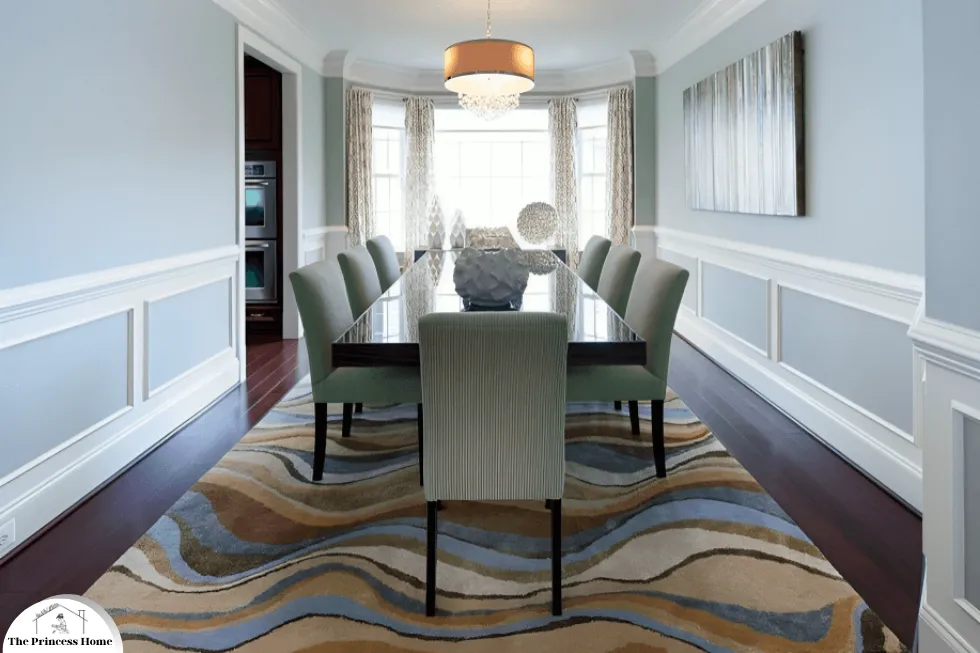
2.Dining Room:
In the dining room, your rug should be large enough to accommodate both the table and chairs, even when the chairs are pulled out. A rug that is 4-6 feet wider and longer than your table is usually recommended. When it comes to choosing a rug for the dining room, it’s essential to select a size that accommodates both the table and chairs comfortably.
Here’s a guideline to follow:
1.Size to Table &Chairs:
Your rug should be large enough to accommodate the dining table and chairs, even when the chairs are pulled out. This ensures that all chair legs remain on the rug, providing a cohesive and visually pleasing look. It also prevents the chairs from catching on the edge of the rug when they’re pulled out.
2.Recommended Size:
A rug that is 4-6 feet wider and longer than your dining table is usually recommended. This allows for ample space around the table for the chairs to be pulled out without slipping off the rug. It also provides a buffer zone between the rug edge and the walls, creating a balanced and proportional look in the room.
By choosing a rug size that accommodates both the table and chairs, you can create a comfortable and functional dining area that’s perfect for gatherings and meals with family and friends. Whether you prefer a rug that fills the entire room or one that sits partially underneath the table, selecting the right size ensures that your dining room rug enhances the space and adds warmth and style to your home.
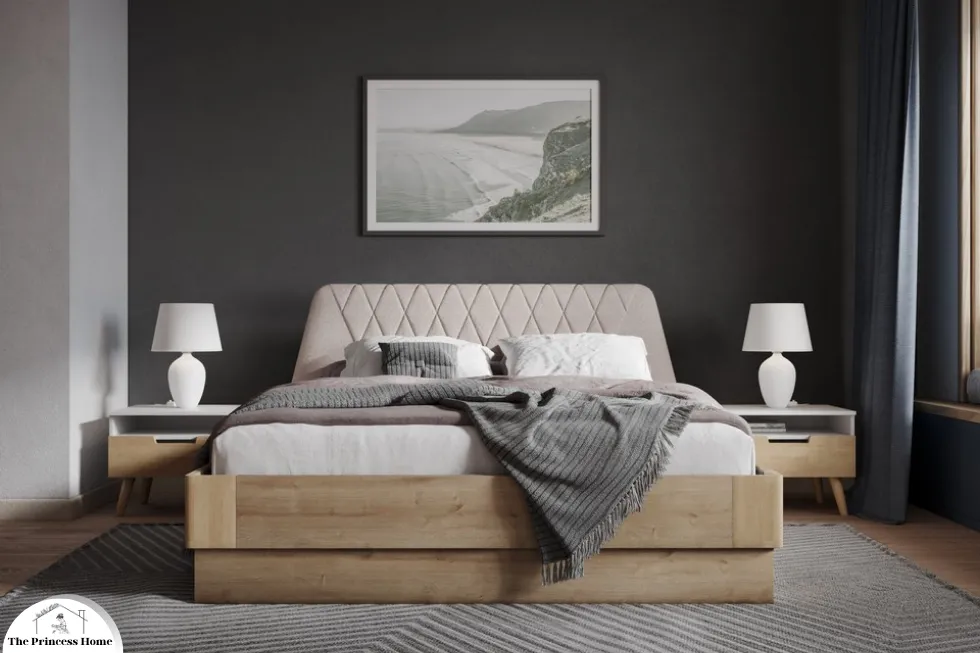
3.Bedroom:
For the bedroom, you have several options. You can choose a rug that fits entirely under the bed, leaving a border of 1-2 feet around the bed. Another option is to place runners on each side or one large rug at the foot of the bed.
When it comes to selecting a rug for the bedroom, there are several options to consider depending on your preferences and the layout of your space:
1.Under the Bed with Border:
One popular option is to choose a rug that fits entirely under the bed, leaving a border of 1-2 feet around the perimeter of the bed. This creates a cozy and defined area for the bed while adding softness and warmth to the room. It’s important to ensure that the rug extends beyond the sides and foot of the bed to create a balanced and proportional look.
2.Runners on Each Side:
Another option is to place runners on each side of the bed. This works particularly well in smaller bedrooms or in rooms where the bed is positioned against a wall. Runners add visual interest and texture to the space while providing a soft landing spot for your feet when getting in and out of bed.
3.One Large Rug :
Alternatively, you can opt for one large rug placed at the foot of the bed. This creates a focal point at the foot of the bed while adding warmth and style to the room. It’s important to choose a rug size that complements the proportions of your bed and allows for ample space on either side.
Whichever option you choose, selecting a rug for the bedroom adds comfort, style, and personality to your space. Whether you prefer a rug that spans the entire room or one that provides a soft landing spot for your feet when getting out of bed, there are plenty of options to suit your needs and preferences.
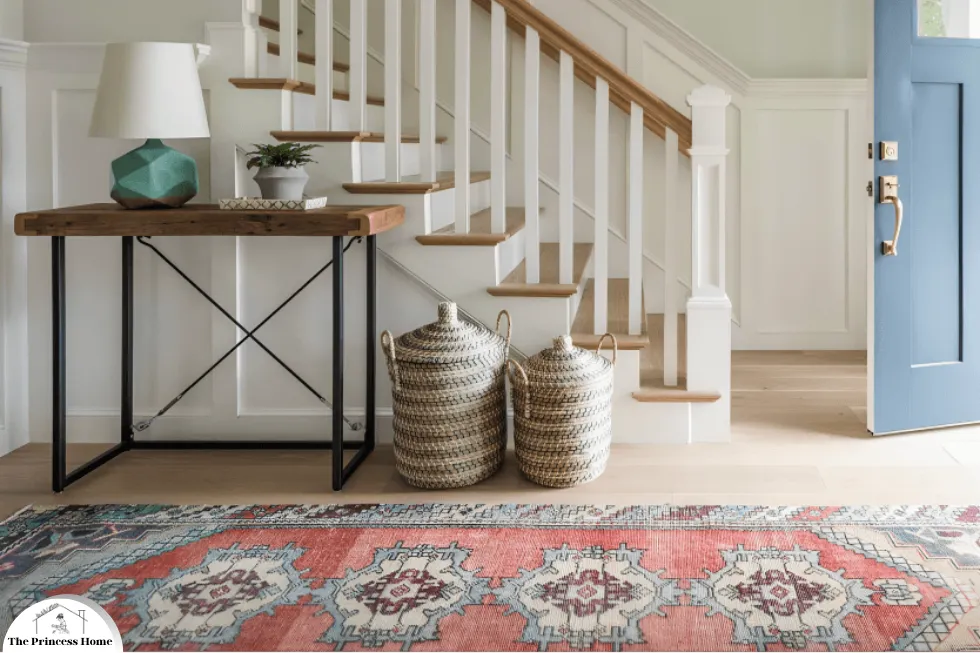
4.Hallways &Entryways:
In high-traffic areas like hallways and entryways, choose a rug that covers the entire pathway or provides ample space for people to walk on without stepping off the rug. Hallways and entryways are high-traffic areas that benefit from rugs both for practicality and aesthetics.
Here are some considerations when choosing rugs for these spaces:
1.Covering the Pathway:
In hallways, it’s ideal to choose a rug that covers the entire pathway from one end to the other. This provides a cohesive and visually appealing look while also protecting the flooring from wear and tear.
2.Ample Space for Walking:
In entryways, select a rug that provides ample space for people to walk on without stepping off the rug. This ensures that shoes are wiped off and dirt is contained within the rug, keeping the rest of the floor clean.
3.Consider Rug Size:
When choosing a rug size for hallways and entryways, measure the width and length of the space and select a rug that fits comfortably within these dimensions. It’s important to leave some space around the edges of the rug to create a visually balanced look and prevent the rug from feeling cramped.
4.Durability:
Since hallways and entryways are high-traffic areas, opt for rugs made from durable materials that can withstand heavy foot traffic and frequent cleaning. Natural fibers like wool or synthetic materials like polypropylene are good choices for rugs in these areas.
By choosing rugs that cover the entire pathway in hallways and provide ample space for walking in entryways, you can create a welcoming and functional space that’s both stylish and practical. A well-chosen rug adds warmth, texture, and personality to these areas while also serving a practical purpose in protecting the flooring and enhancing the overall look of your home.
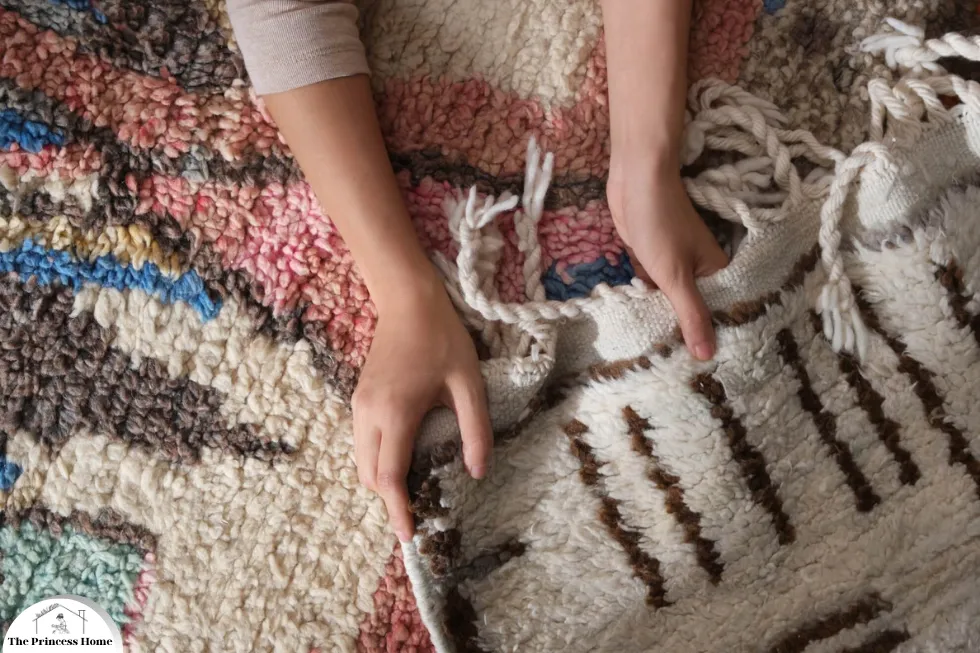
3*.Consider Material &Durability
Rug material is a critical factor in determining the rug’s durability, comfort, and maintenance requirements. Different materials offer various benefits and suit different needs. Here are some common rug materials:
1. Wool Fibers:
Wool is a popular and durable material that is soft underfoot and naturally stain-resistant. It’s a great choice for areas with moderate foot traffic, like living rooms and bedrooms. Wool is a fantastic choice for rugs due to its many qualities that make it both practical and luxurious.
Here are some reasons why wool is such a popular option:
1.Durability:
Wool is inherently durable, making it well-suited for areas with moderate foot traffic, such as living rooms and bedrooms. It can withstand regular use and maintain its appearance over time, making it a long-lasting investment for your home.
2.Softness:
Wool is naturally soft and plush underfoot, providing a comfortable surface for walking, lounging, and playing. Its softness adds warmth and coziness to any room, making it especially inviting in spaces where comfort is a priority.
3.Stain Resistance:
Wool is naturally resistant to staining, thanks to its unique structure and properties. It repels moisture and dirt, making it easier to clean and maintain compared to other materials. This makes wool rugs an excellent choice for busy households and areas prone to spills and messes.
4.Insulating Properties:
Wool has excellent insulating properties, helping to regulate temperature and humidity in your home. It helps keep rooms warm in the winter and cool in the summer, creating a comfortable environment year-round.
5.Natural Beauty:
Wool rugs have a natural beauty and richness that adds warmth and character to any space. They come in a variety of colors, patterns, and textures, allowing you to find the perfect rug to complement your decor style.
Overall, wool is a versatile and practical choice for rugs, offering durability, softness, stain resistance, and natural beauty. Whether you’re furnishing a living room, bedroom, or any other area of your home, a wool rug is sure to add comfort, style, and luxury to your space for years to come.
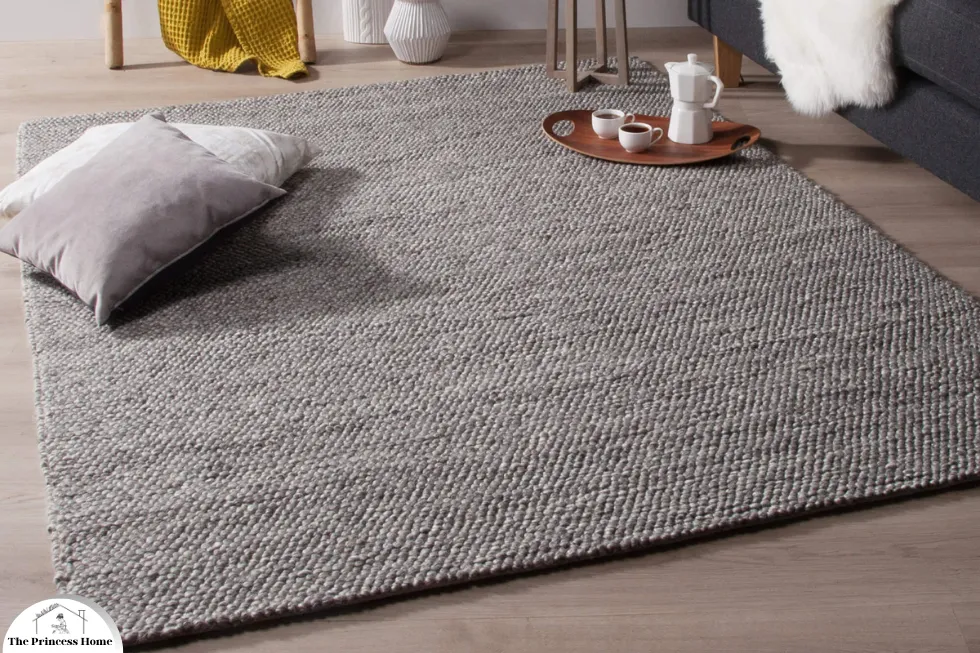
2. Synthetic Fibers:
Materials like polypropylene and nylon are affordable, easy to clean, and resistant to moisture, making them ideal for high-traffic areas, outdoor spaces, or homes with pets. Synthetic fibers like polypropylene and nylon offer several advantages that make them well-suited for rugs in various settings.
Here are some key benefits of synthetic fiber rugs:
1.Affordability:
Synthetic fiber rugs are often more budget-friendly than natural fiber rugs like wool or cotton, making them a cost-effective option for homeowners on a budget or those looking to furnish multiple rooms without breaking the bank.
2.Durability:
Polypropylene and nylon are highly durable materials that can withstand heavy foot traffic, making them ideal for high-traffic areas like hallways, entryways, and living rooms. They are resistant to wear and tear, ensuring that your rug maintains its appearance and integrity over time.
3.Ease of Cleaning:
Synthetic fiber rugs are easy to clean and maintain, making them perfect for homes with pets, children, or busy lifestyles. They are resistant to moisture and stains, allowing you to spot clean spills and messes with ease. Many synthetic fiber rugs can also be cleaned with water and mild detergent, making them low-maintenance options for busy households.
4.Moisture Resistance:
Polypropylene and nylon are inherently moisture-resistant materials, making them suitable for outdoor use or indoor spaces prone to humidity or moisture, such as bathrooms or basements. They won’t absorb water or moisture, preventing mold and mildew growth and ensuring that your rug stays looking fresh and clean.
5.Versatility:
Synthetic fiber rugs come in a wide range of colors, patterns, and textures, allowing you to find the perfect rug to complement your decor style. Whether you prefer a bold and vibrant rug or a subtle and understated design, there’s a synthetic fiber option to suit your preferences.
Overall, synthetic fiber rugs offer affordability, durability, ease of cleaning, moisture resistance, and versatility, making them an excellent choice for a variety of settings and lifestyles. Whether you’re furnishing a high-traffic area, outdoor space, or home with pets, a synthetic fiber rug provides the perfect combination of style and practicality for your needs.
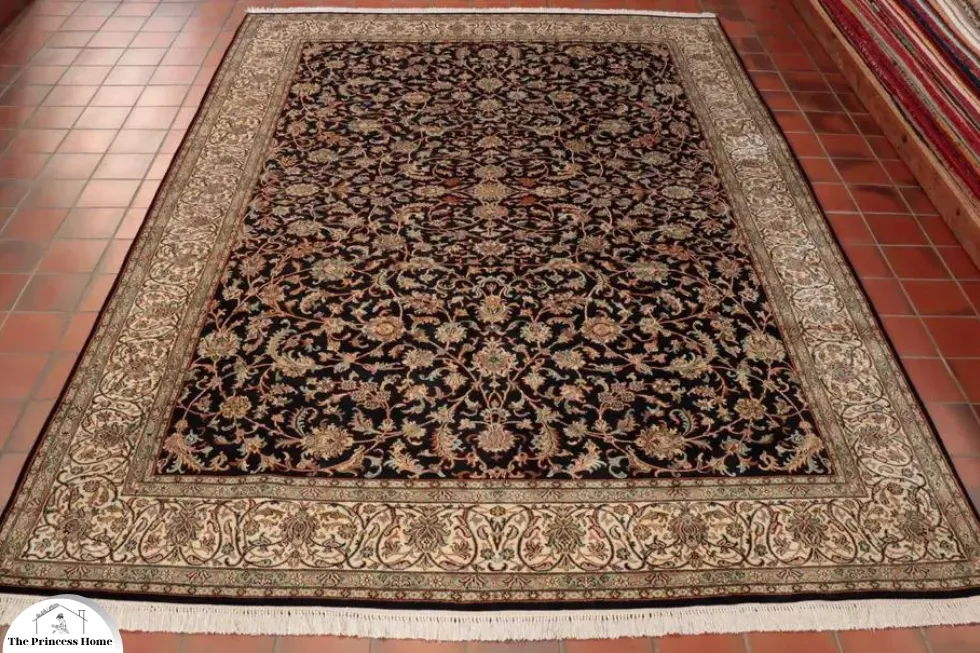
3. Silk Fibers:
Silk rugs are luxurious and have a beautiful sheen. They are best suited for low-traffic areas and should be handled with care. Silk rugs are known for their luxurious look and feel, as well as their beautiful sheen that adds an elegant touch to any space. However, due to their delicate nature, silk rugs are best suited for low-traffic areas where they can be admired and enjoyed without experiencing heavy use.
Here are some key considerations when it comes to silk rugs:
1.Luxurious Appearance:
Silk rugs have a unique luster and softness that give them a luxurious appearance. Their fine fibers reflect light beautifully, creating a stunning visual effect that adds sophistication to any room.
2.Low-Traffic Areas:
Due to their delicate nature, silk rugs are best suited for low-traffic areas of the home, such as formal living rooms, dining rooms, or bedrooms. Placing a silk rug in a high-traffic area can lead to premature wear and damage, compromising its beauty and longevity.
3.Handle with Care:
Silk rugs require gentle handling and care to maintain their beauty and integrity. They should be vacuumed regularly with a brushless attachment to prevent damage to the delicate fibers. Spills should be blotted immediately with a clean, dry cloth, and professional cleaning is recommended to remove stains and dirt safely.
4.Protection from Sunlight:
Silk rugs are sensitive to sunlight and may fade or discolor over time if exposed to direct sunlight. To preserve the rug’s color and appearance, it’s best to place it in a shaded area or use window treatments to block out harmful UV rays.
5.Investment Piece:
Silk rugs are often considered investment pieces due to their beauty and rarity. While they may require more care and maintenance than other types of rugs, their timeless elegance and luxurious feel make them a worthwhile addition to any home.
Overall, silk rugs are a luxurious choice for adding elegance and sophistication to low-traffic areas of the home. With proper care and maintenance, a silk rug can become a cherished heirloom that enhances the beauty of your space for years to come.
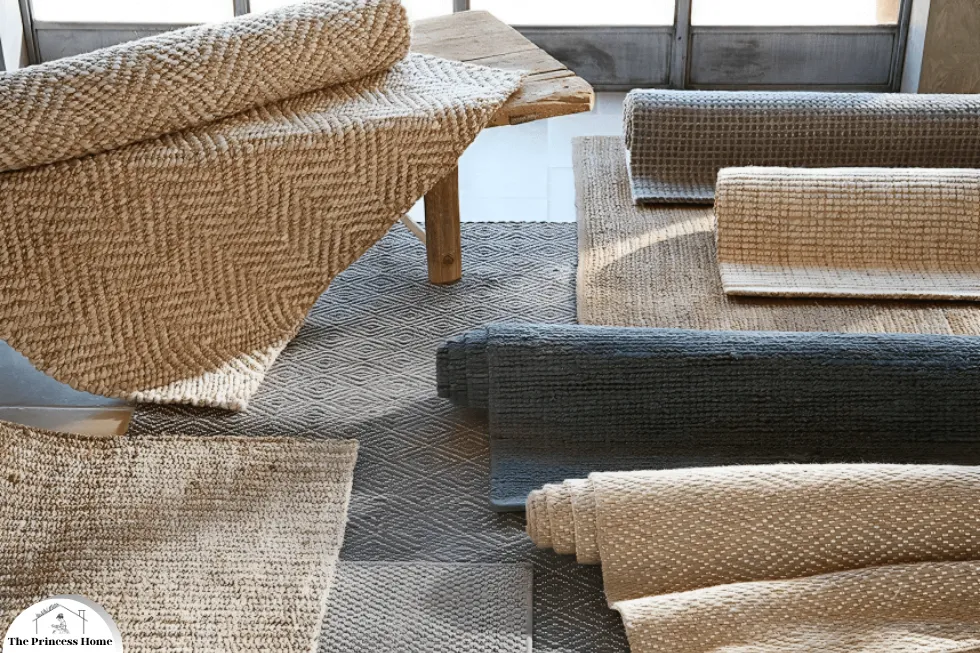
4. Natural Fibers:
Sisal, jute, and seagrass rugs are eco-friendly options with a casual, textured look. They are perfect for adding a touch of natural beauty to your space but may not be the softest underfoot. Natural fiber rugs like sisal, jute, and seagrass are wonderful options for adding a touch of organic beauty and texture to your space.
Here are some key features of these eco-friendly rugs:
1.Eco-Friendly:
Sisal, jute, and seagrass rugs are made from renewable and sustainable plant fibers, making them environmentally friendly choices for your home. By opting for natural fiber rugs, you can reduce your carbon footprint and support eco-friendly practices.
2.Casual &Textured Look:
Natural fiber rugs have a casual and textured appearance that adds warmth and character to any room. Their earthy tones and woven textures create a relaxed and inviting atmosphere, perfect for creating a cozy and laid-back vibe in your space.
3.Durability:
Sisal, jute, and seagrass rugs are highly durable and resistant to wear and tear, making them ideal for high-traffic areas of the home, such as entryways, hallways, and living rooms. Their sturdy construction ensures that they can withstand regular use and maintain their appearance over time.
4.Not the Softest Underfoot:
While natural fiber rugs offer many benefits, they may not be the softest option underfoot compared to rugs made from wool or synthetic materials. However, this is a trade-off for their durability and eco-friendly qualities. To enhance comfort, you can layer a natural fiber rug with a softer rug or add plush cushions and throws to your seating areas.
5.Versatility:
Natural fiber rugs complement a variety of decor styles, from coastal and bohemian to rustic and minimalist. Their neutral tones and organic textures allow them to blend seamlessly with different color palettes and design aesthetics, making them a versatile choice for any home.
Overall, sisal, jute, and seagrass rugs are excellent options for adding natural beauty and texture to your space. Whether you’re furnishing a coastal retreat or a modern urban apartment, these eco-friendly rugs provide a stylish and sustainable flooring solution that’s both practical and aesthetically pleasing.
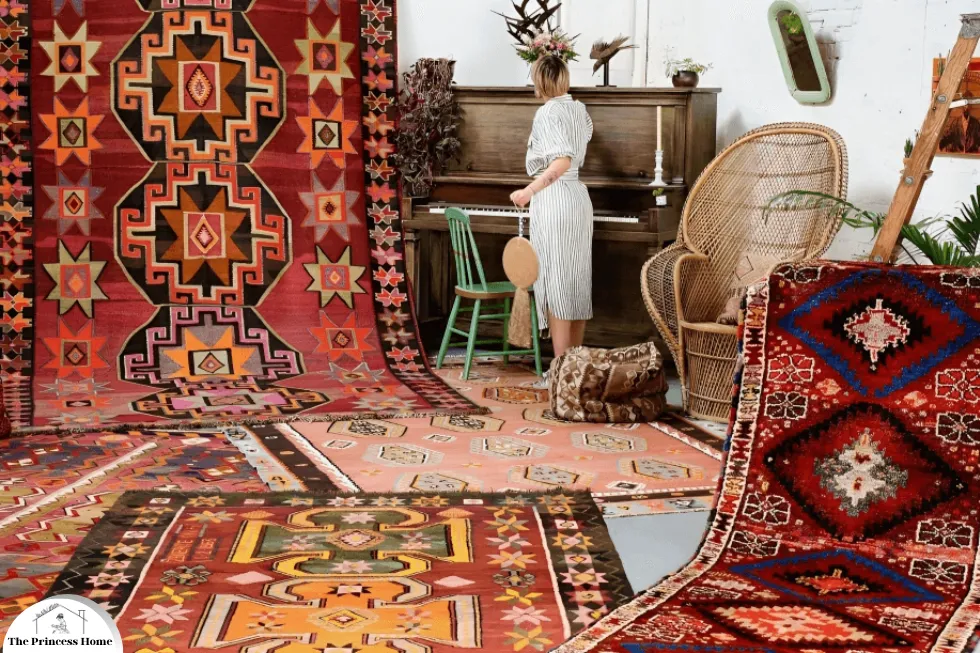
4*. Choose a Style &Design
Rug style and design play a significant role in defining the overall look of your space. Your choice should harmonize with your existing decor, color scheme, and personal taste. Here are some popular rug styles:
1. Traditional Rugs:
Traditional rugs are rugs that feature classic design elements and motifs that are rooted in historical or cultural traditions. These rugs often draw inspiration from traditional patterns, such as floral, geometric, or oriental designs, and are characterized by intricate details and craftsmanship. Traditional rugs are typically made from natural materials such as wool or silk and are handcrafted using traditional weaving techniques passed down through generations. These rugs add a sense of timeless elegance and sophistication to any space and are often used to anchor a room’s decor or to add warmth and texture to hardwood or tile flooring.
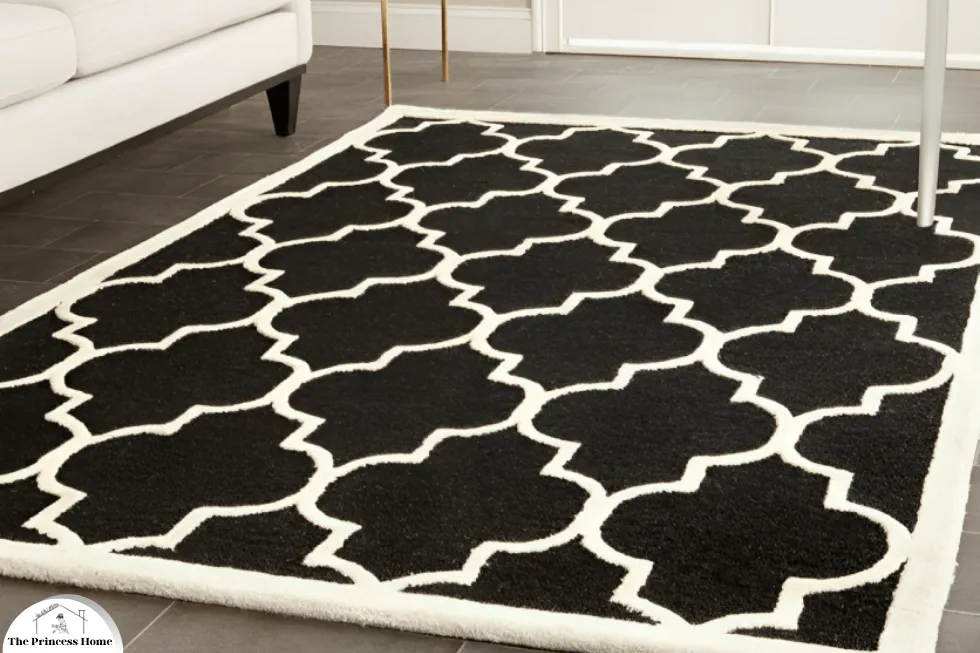
2. Contemporary Rugs:
Contemporary rugs are rugs that feature modern and innovative designs, often characterized by bold patterns, geometric shapes, and vibrant colors. Unlike traditional rugs, which draw inspiration from historical or cultural motifs, contemporary rugs reflect current design trends and aesthetics. These rugs may incorporate abstract designs, asymmetrical patterns, or minimalist compositions, creating a dynamic and visually striking focal point in a room.
Contemporary rugs are typically made from a variety of materials, including wool, silk, cotton, or synthetic fibers, and are available in a range of sizes and shapes to suit different spaces and preferences. They are popular choices for adding a fresh and contemporary touch to modern interiors, from living rooms and bedrooms to offices and commercial spaces.
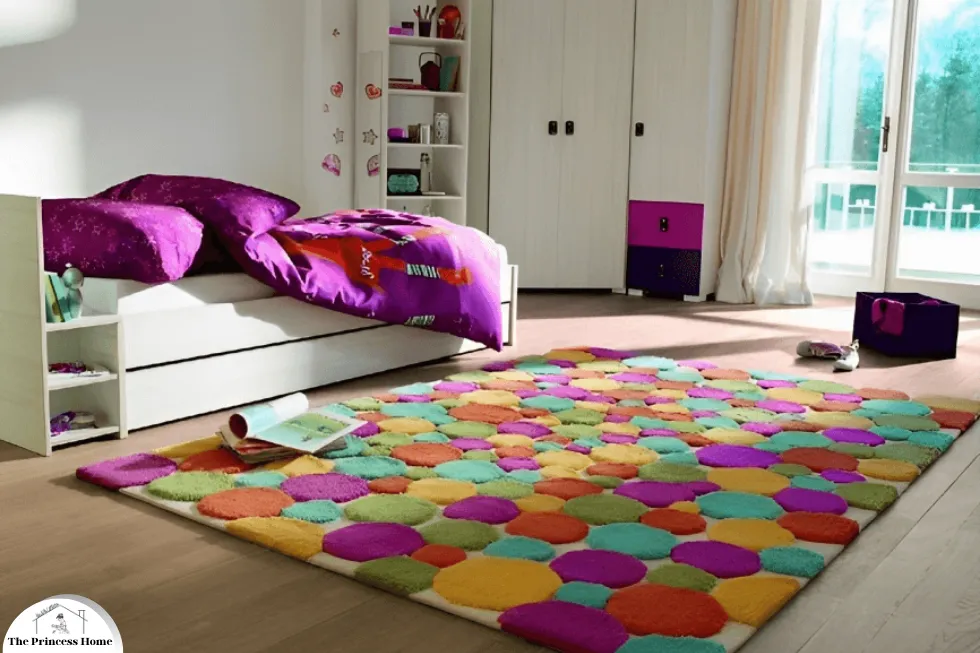
3. Functional Rugs:
Functional rugs are rugs designed not only for aesthetic purposes but also to serve practical functions within a space. Unlike purely decorative rugs, functional rugs are intended to fulfill specific needs or requirements, such as providing comfort, insulation, or safety (Kids room) .These rugs are often chosen based on their ability to enhance the usability and livability of a room, as well as their durability and ease of maintenance.
Examples of functional rugs include kitchen mats that provide cushioning and support while standing, outdoor rugs that resist weather damage and prevent slipping, and hallway runners that protect flooring in high-traffic areas.
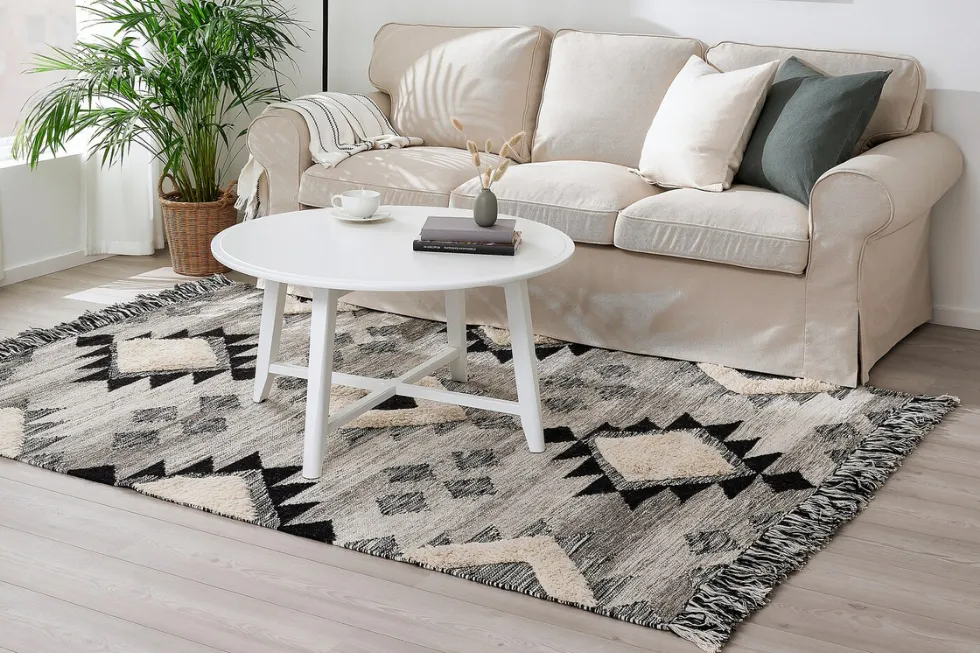
4. Transitional Rugs:
Transitional rugs are a style of rug that blend traditional and contemporary design elements. These rugs often feature a mix of classic patterns, such as floral or geometric motifs, with modern color schemes and minimalist or abstract designs.
Transitional rugs offer a versatile and timeless option for decorating a variety of spaces, as they can seamlessly complement both traditional and modern decor styles. They provide a bridge between the old and the new, making them a popular choice for homeowners seeking a balanced and eclectic look in their homes.
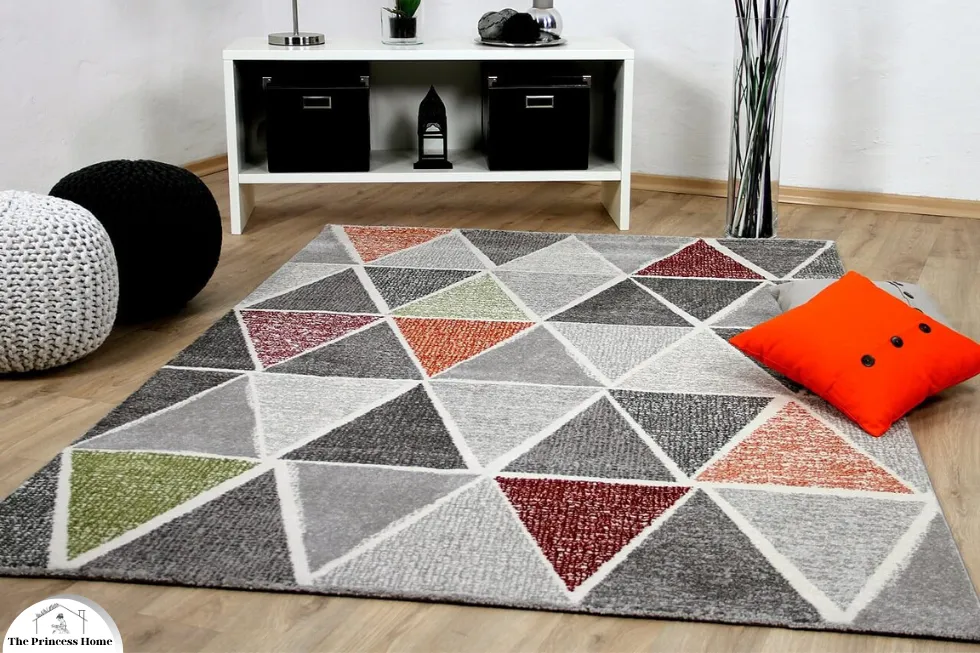
5. Geometric Rugs:
Geometric rugs are rugs featuring patterns composed of geometric shapes such as squares, rectangles, circles, triangles, or polygons. These shapes are often arranged in repeating or alternating patterns to create visually striking designs. Geometric rugs can range from simple and minimalist to bold and intricate, offering a versatile option for adding visual interest to any space.
They are popular choices for modern and contemporary interiors, as their clean lines and geometric patterns can complement a variety of decor styles. Whether used as a focal point in a room or as a subtle accent, geometric rugs add a dynamic and modern touch to floors while enhancing the overall aesthetic of the space.
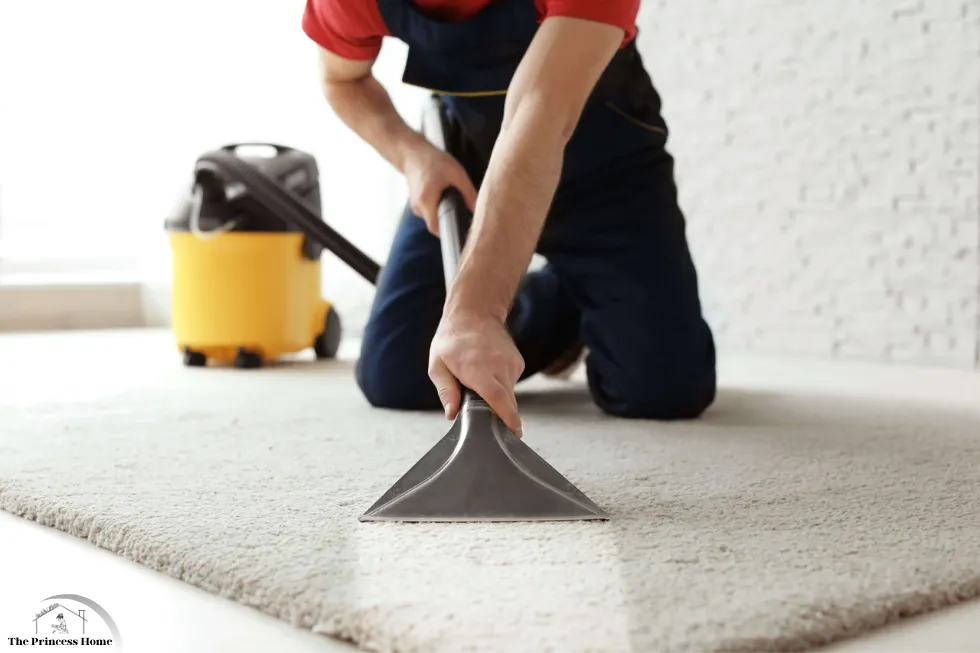
5*. Consider Maintenance &Care
The maintenance and care of your rug are important factors to consider, as they will impact its longevity and appearance. Here are some maintenance considerations:
1. Cleaning:
Consider how easy it is to clean the rug. Some materials and designs are more stain-resistant and easier to clean than others. considering the ease of cleaning is crucial when selecting a rug, especially in high-traffic areas or homes with children or pets.
Here are some factors to keep in mind regarding rug cleaning:
1.Material:
Different rug materials have varying degrees of stain resistance and ease of cleaning. For example, synthetic fibers like polypropylene and nylon are often more stain-resistant and easier to clean than natural fibers like wool or cotton. Similarly, rugs with low pile or flatweave designs tend to trap less dirt and are easier to vacuum and spot clean compared to high-pile rugs.
2.Design:
The design and construction of the rug can also impact its ease of cleaning. Rugs with intricate patterns or textures may require more effort to clean thoroughly, as dirt and debris can become trapped in the fibers or crevices. On the other hand, rugs with simple designs or solid colors may be easier to maintain and spot clean.
3.Stain Resistance:
Some rugs come treated with stain-resistant coatings or finishes that help repel spills and make cleaning easier. These rugs are particularly beneficial in areas prone to spills or accidents, such as dining rooms or kitchens.
4.Maintenance:
Regular maintenance, such as vacuuming and spot cleaning, is essential for keeping your rug clean and prolonging its lifespan. Vacuuming removes dirt, dust, and debris from the rug’s surface and prevents it from becoming embedded in the fibers. Spot cleaning spills and stains promptly with a mild detergent and water can prevent them from setting and becoming more difficult to remove.
5.Professional Cleaning:
For deeper cleaning and maintenance, consider hiring a professional rug cleaner to steam clean or shampoo your rug periodically. Professional cleaning helps remove embedded dirt and stains, refreshes the rug’s appearance, and extends its lifespan.
By considering the ease of cleaning when selecting a rug, you can choose a flooring option that fits your lifestyle and maintenance preferences. Whether you opt for a stain-resistant synthetic rug or a low-maintenance flatweave design, prioritizing cleaning considerations ensures that your rug remains looking its best for years to come.
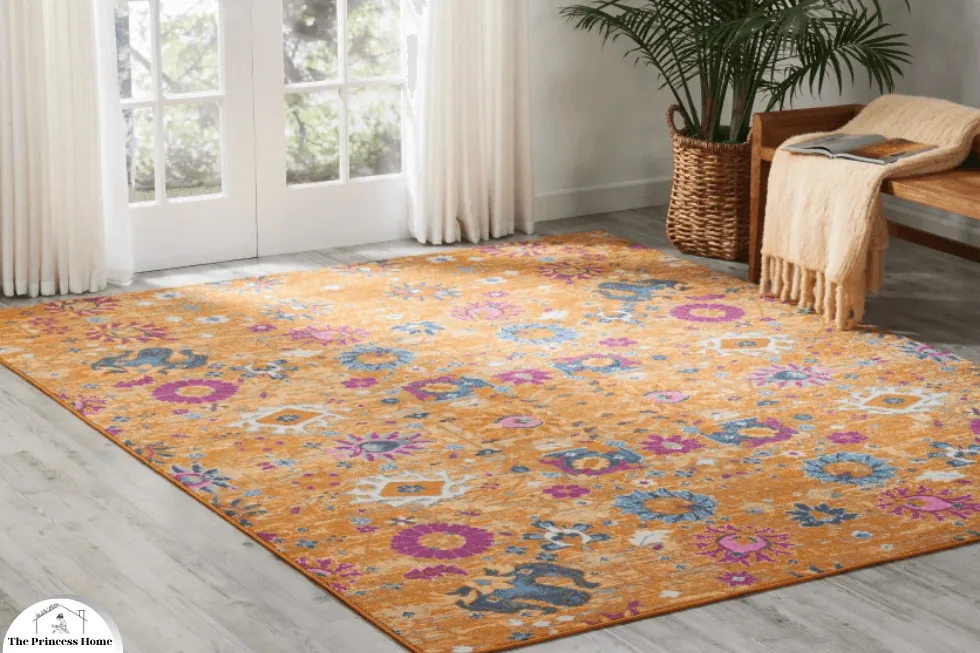
2. Foot Traffic:
Choose a rug that can handle the level of foot traffic in the area. For high-traffic areas, opt for durable materials like nylon or polypropylene. selecting a rug that can handle the level of foot traffic in a particular area is essential for ensuring its longevity and maintaining its appearance. For high-traffic areas, such as entryways, hallways, and living rooms, durability is key.
Here are some durable materials that are well-suited for high-traffic areas:
1.Nylon:
Nylon is one of the most durable synthetic fibers used in rug construction. It is resilient to wear and tear, resistant to crushing and matting, and can withstand heavy foot traffic without losing its shape or appearance. Nylon rugs are also easy to clean and maintain, making them an excellent choice for busy households.
2.Polypropylene (Olefin):
Polypropylene, also known as olefin, is another durable synthetic fiber commonly used in rug construction. It is resistant to stains, moisture, fading, and mold, making it ideal for high-traffic areas, outdoor spaces, and homes with pets or children. Polypropylene rugs are affordable, easy to clean, and come in a variety of styles and designs.
3.Polyester:
Polyester rugs are known for their softness, vibrant colors, and resistance to stains and fading. While not as durable as nylon or polypropylene, polyester rugs still offer good performance in high-traffic areas and can be a budget-friendly option for homeowners looking for a stylish and practical rug.
4.Wool Blend:
Wool blend rugs combine the durability of wool with the affordability and stain resistance of synthetic fibers. These rugs are durable, resilient, and well-suited for high-traffic areas where both comfort and durability are desired.
When choosing a rug for high-traffic areas, consider factors such as durability, stain resistance, ease of cleaning, and maintenance requirements. By selecting a rug made from durable materials like nylon or polypropylene, you can ensure that your rug can withstand the rigors of daily use and continue to look beautiful for years to come.
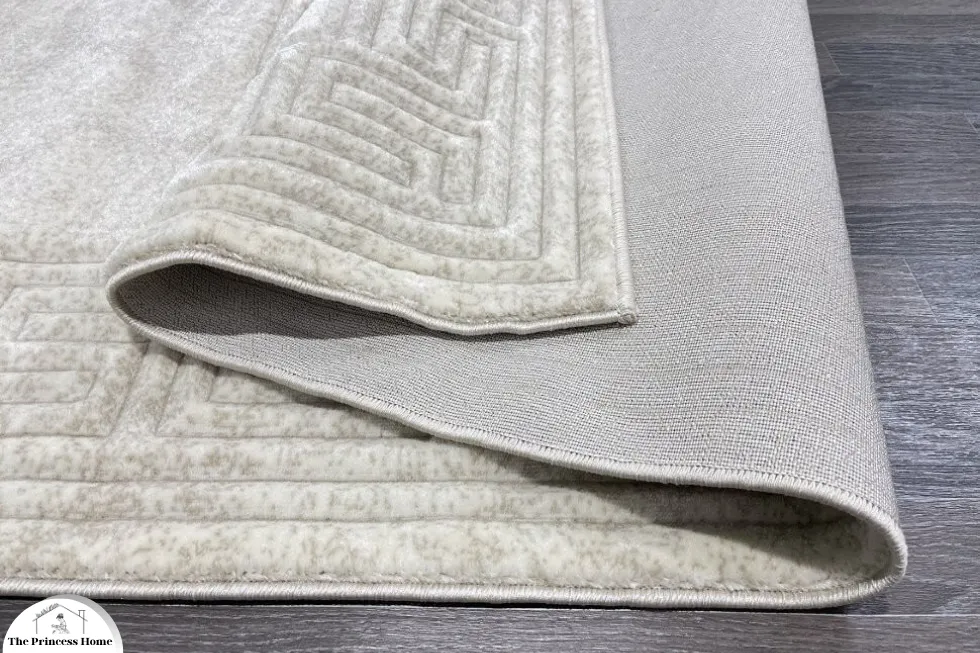
3. Padding:
Invest in a quality rug pad to protect your rug and prevent it from slipping, especially on hard flooring surfaces. Investing in a quality rug pad is an essential step in caring for your rug and ensuring both its longevity and safety.
Here are some key reasons why rug padding is important:
1.Protection for Your Rug:
A rug pad provides an extra layer of cushioning and support for your rug, helping to protect it from wear and tear caused by foot traffic, furniture weight, and friction with the floor. It helps prevent premature wear, prolonging the life of your rug.
2.Prevents Slipping &Tripping:
Rug pads help keep your rug in place and prevent it from slipping or bunching up, especially on hard flooring surfaces like hardwood, tile, or laminate. This not only prevents accidents and injuries caused by tripping over a loose rug but also keeps your rug looking neat and tidy.
3.Cushioning & Comfort:
Rug pads add cushioning underfoot, making your rug feel softer and more comfortable to walk on. This is particularly beneficial in areas where you spend a lot of time standing or walking, such as kitchens or standing desks.
4.Protects Flooring:
Rug pads act as a protective barrier between your rug and the floor, helping to prevent scratches, scuffs, and damage to the underlying flooring surface. This is especially important for delicate or sensitive flooring materials like hardwood or natural stone.
5.Improves Air Circulation:
Rug pads promote air circulation between the rug and the floor, which helps prevent moisture buildup and mold or mildew growth. This is particularly beneficial in humid environments or areas prone to moisture, such as basements or bathrooms.
When choosing a rug pad, look for one that is specifically designed for your type of flooring and compatible with your rug size and style. Quality rug pads are typically made from materials like felt or rubber and come in various thicknesses and densities to suit different needs and preferences. By investing in a quality rug pad, you can protect your rug, enhance safety and comfort, and prolong the life of both your rug and your flooring.
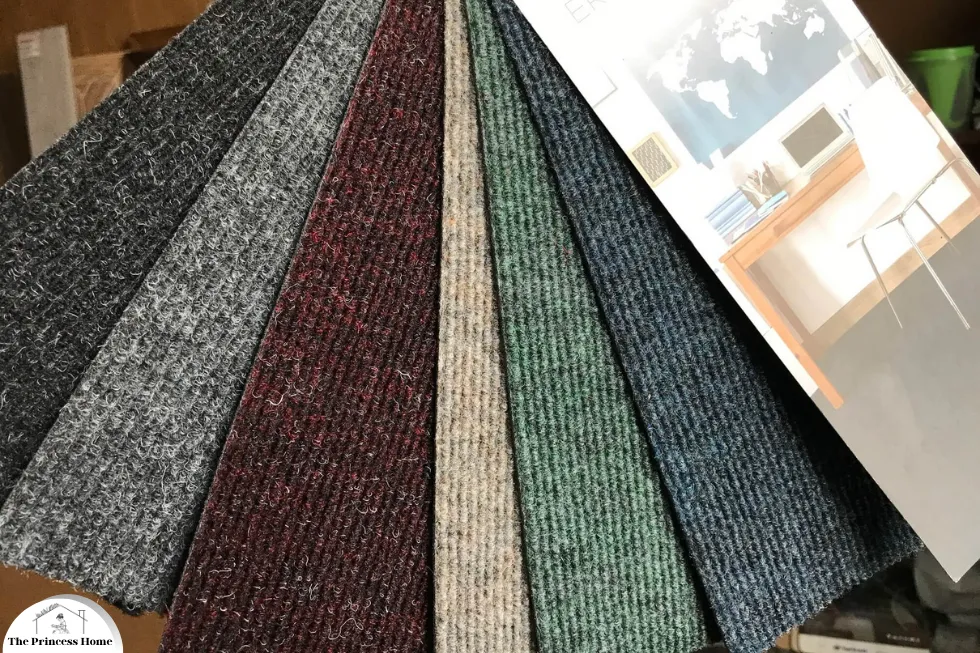
6*. Test & Visualize
Before making a purchase, consider ordering rug samples or swatches to ensure the color and texture match your existing decor. Additionally, take measurements and use masking tape to visualize the rug’s size and placement in your space. This step will help you make a more informed decision and avoid costly mistakes. Testing and visualizing are essential steps in the rug-buying process, helping you ensure that the rug you choose complements your existing decor and fits perfectly within your space.
Here’s how to approach it:
1.Rug Samples or Swatches:
Many rug retailers offer samples or swatches that allow you to see and feel the rug’s color, texture, and quality before making a purchase. Ordering samples can give you a better sense of how the rug will look and feel in your home, helping you make a more informed decision.
2.Take Measurements:
Before ordering a rug, be sure to measure the area where you plan to place it, taking into account furniture placement and traffic flow. This will help you determine the appropriate size for your rug and avoid purchasing one that’s too small or too large for your space.
3.Visualize with Masking Tape:
Once you have your measurements, use masking tape to outline the dimensions of the rug on the floor. This will give you a visual representation of how the rug will fit within your space and help you determine the best placement for furniture. It’s also a helpful way to test different rug sizes and configurations before making a final decision.
By ordering rug samples or swatches, taking accurate measurements, and visualizing the rug’s size and placement with masking tape, you can ensure that the rug you choose complements your existing decor and fits seamlessly within your space. This step-by-step approach will help you make a more informed decision and avoid costly mistakes when purchasing a rug for your home.
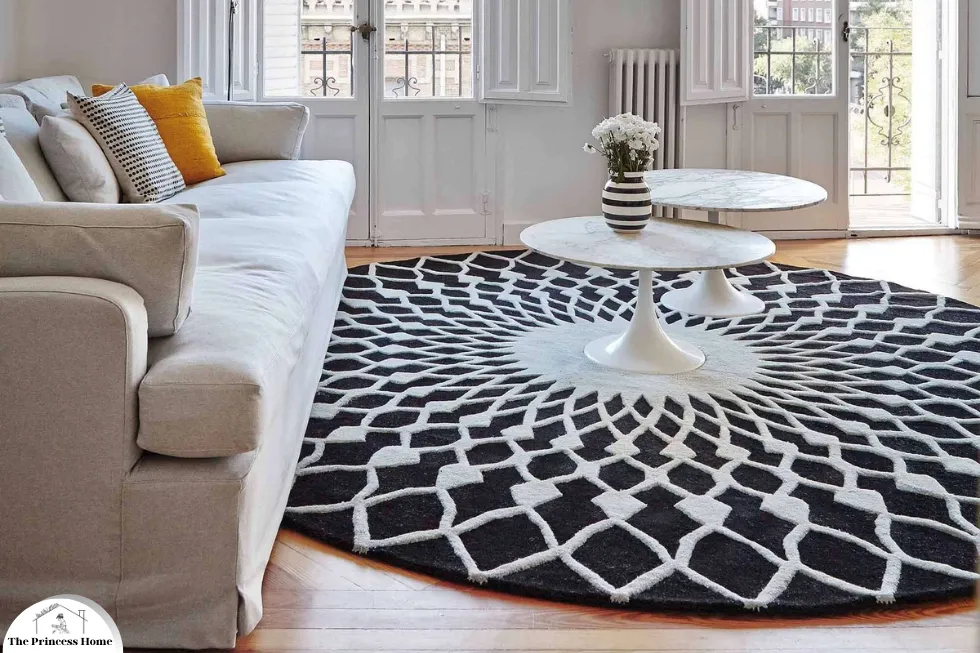
7*. Set a Budget
Rugs come in a wide range of prices, from budget-friendly options to high-end luxury rugs. Before making your final decision, set a budget that aligns with your financial constraints. Keep in mind that a quality rug is an investment that can last for many years, so it’s worth allocating a reasonable budget to find the best fit for your needs.
When setting your budget, consider factors such as the size of the rug, the material it’s made from, and any additional features or embellishments. Keep in mind that a quality rug is an investment that can last for many years, so it’s worth allocating a reasonable budget to ensure you find a rug that meets your needs and withstands the test of time.
If you’re working with a limited budget, don’t be discouraged—there are plenty of affordable options available that still offer quality and style. Look for rugs made from durable materials like wool or synthetic fibers, which often provide the best value for your money. Additionally, consider shopping during sales or promotions, or exploring secondhand options to find rugs that fit within your budget.
Ultimately, the key is to set a budget that reflects your financial constraints while also allowing you to find a rug that meets your needs in terms of quality, style, and longevity. By carefully considering your budget and exploring all available options, you can find the perfect rug for your home without breaking the bank.
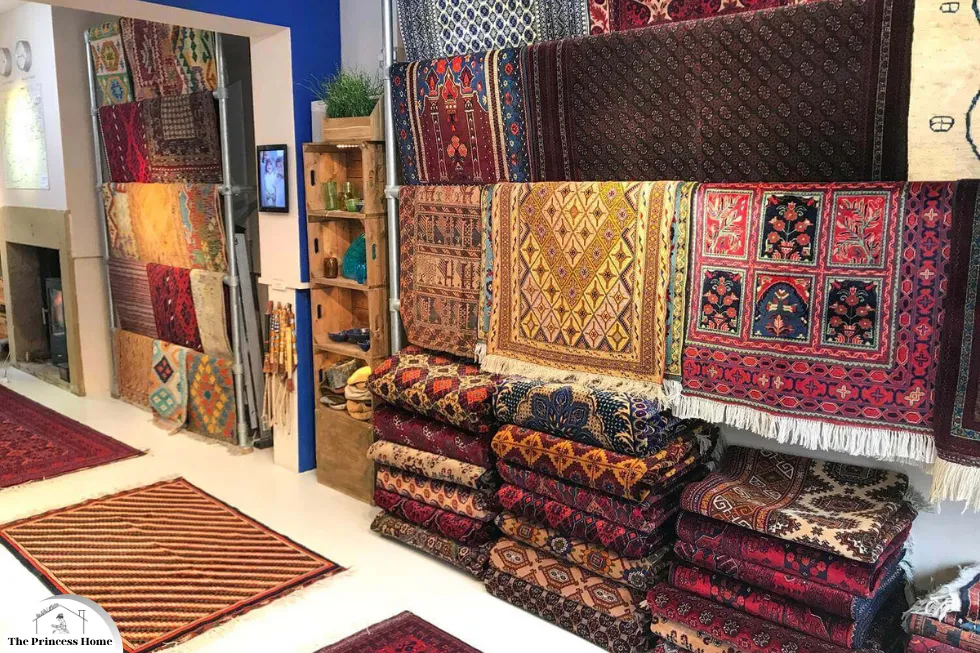
**Shop Smart**
Now that you have a clear understanding of your rug’s purpose, size, material, style, maintenance, and budget, it’s time to start shopping. You can explore various options at local rug stores, furniture shops, and online retailers. Take your time to compare prices and read reviews to ensure you’re getting the best value for your money.
An informed decision when selecting a rug for your home. Here are a few more ideas and considerations to help you choose the right rug:
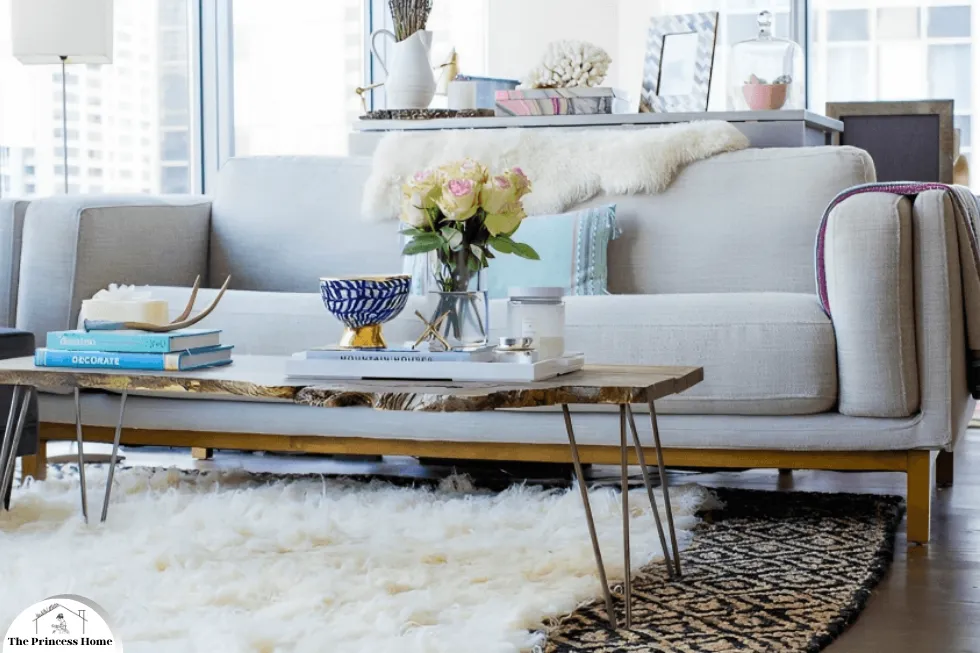
1.*Layering Rugs:
Layering rugs can add depth and visual interest to your space. You can place a smaller rug on top of a larger one to create a stylish and cozy effect. This is particularly popular in living rooms and bedrooms, where you can mix textures and patterns to achieve a unique look. Layering rugs is a fantastic way to add depth, texture, and visual interest to your space, creating a stylish and cozy effect.
Here are some tips for successfully layering rugs:
1.Mix Sizes and Shapes:
Experiment with different sizes and shapes of rugs to create a dynamic and layered look. For example, you can place a smaller rug on top of a larger one to create contrast and define specific areas within a room.
2.Play with Textures &Patterns:
Mixing textures and patterns adds depth and dimension to your space. Consider layering a plush, shaggy rug over a flatweave or sisal rug for added comfort and visual interest. You can also mix patterns, such as pairing a geometric rug with a floral or abstract rug, to create a dynamic and eclectic look.
3.Anchor Furniture:
Use rugs to anchor furniture groupings within a room. In living rooms, for example, you can place a larger rug underneath the main seating area and layer a smaller rug in front of the sofa or under a coffee table to define the space and add visual interest.
4.Create Zones:
Layering rugs is an excellent way to define separate zones within an open-concept space or large room. You can use rugs to delineate the living area from the dining area or create a cozy reading nook within a larger bedroom or living room.
5.Consider Functionality:
When layering rugs, consider the functionality and traffic flow of the space. Make sure the rugs are positioned in areas where they won’t cause tripping hazards or interfere with the movement of furniture and people.
Overall, layering rugs is a versatile and creative way to enhance your space and express your personal style. Whether you prefer a bohemian-inspired look with layered rugs in bold colors and patterns or a more minimalist approach with subtle textures and neutrals, layering rugs allows you to customize your space and create a unique and inviting atmosphere.

2.*Rug Shape:
Consider the shape of the rug in relation to the furniture and the room. Rectangular rugs are the most common, but you can also find round, oval, square, and even irregularly shaped rugs. The shape can influence the flow and feel of the space. The shape of a rug can significantly influence the overall look and feel of a room, as well as its functionality and flow.
Here are some considerations when choosing the shape of a rug:
1.Rectangular Rugs:
Rectangular rugs are the most common shape and are versatile enough to suit a wide range of room layouts and furniture arrangements. They work well in living rooms, dining rooms, bedrooms, and hallways, providing a balanced and cohesive look.
2.Round Rugs:
Round rugs add visual interest and soften the angular lines of furniture and room layout. They are ideal for defining cozy conversation areas in living rooms, creating a focal point in entryways or under round dining tables, and adding a playful touch to children’s rooms or nurseries.
3.Square Rugs:
Square rugs offer a modern and symmetrical look that works well in contemporary and minimalist interiors. They are great for square or round dining tables, defining seating areas in open-concept spaces, or adding geometric interest to hallways or entryways.
4.Oval Rugs:
Oval rugs have a unique and elegant shape that adds sophistication to any room. They are ideal for long, narrow spaces like hallways or runners, as well as for defining seating areas in living rooms or under oval dining tables.
5.Irregularly Shaped Rugs:
Irregularly shaped rugs, such as cowhide or sheepskin rugs, add a rustic and organic touch to a room. They are great for layering over larger rugs or placing in unexpected areas like under a reading nook or accent chair to create visual interest.
When choosing the shape of a rug, consider the size and layout of the room, the furniture arrangement, and the overall style and aesthetic you want to achieve. By selecting the right shape, you can enhance the flow and feel of the space, create focal points, and add personality and visual interest to your home.
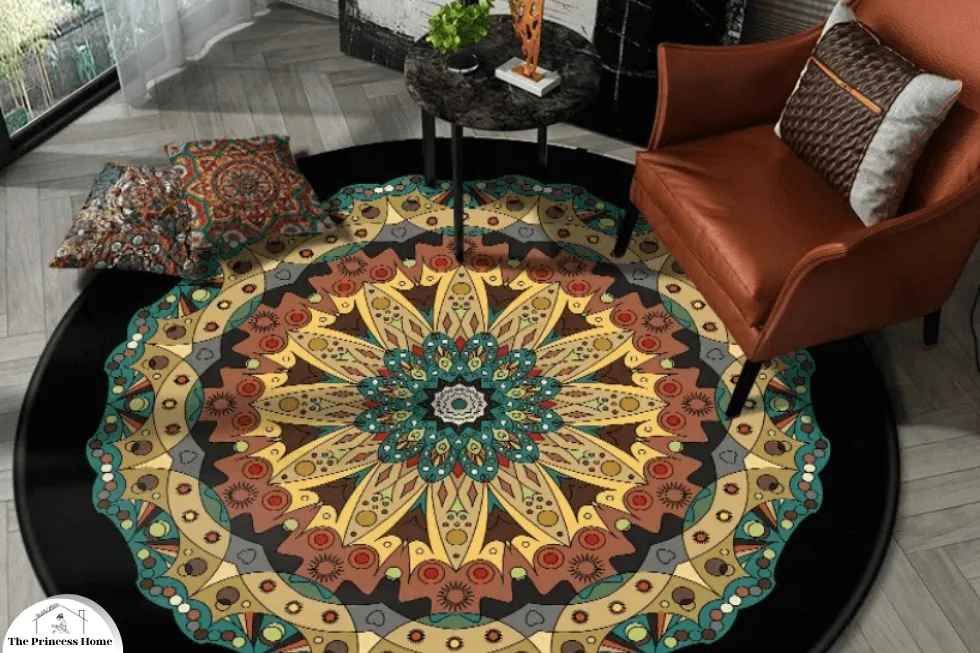
3.*Rug Color:
Color is a critical aspect of rug selection. Choose colors that complement or contrast with your existing color scheme. Light-colored rugs can make a room appear more spacious, while dark colors add warmth and coziness. Neutral tones are versatile and can work in various design styles. the color of a rug plays a significant role in setting the tone and mood of a room, as well as complementing or contrasting with the existing color scheme.
Here are some considerations when selecting rug colors:
1.Complement or Contrast:
Choose rug colors that either complement or contrast with the existing colors in the room. For example, if you have neutral-colored walls and furniture, consider adding a rug with pops of color to inject visual interest and personality into the space. Alternatively, if your room features bold or vibrant colors, opt for a rug with more subdued tones to balance the overall look.
2.Light vs. Dark Colors:
Light-colored rugs, such as whites, creams, and pastels, can make a room appear more spacious and airy by reflecting light and creating a sense of openness. They are ideal for small or dark rooms or areas where you want to create a light and airy atmosphere. On the other hand, dark-colored rugs, such as grays, browns, and blacks, add warmth and coziness to a room by anchoring the space and providing contrast against lighter furnishings.
3.Versatile Neutrals:
Neutral-colored rugs, such as beiges, taupes, and greiges, are incredibly versatile and can work with various design styles and color palettes. They provide a timeless and sophisticated backdrop for furniture and decor, allowing you to change the look of the room easily by swapping out accessories or accent pieces.
4.Consider Functionality:
When selecting rug colors, consider the functionality and purpose of the space. For high-traffic areas like entryways, hallways, and living rooms, opt for rug colors that are forgiving and hide dirt and stains well. For more formal spaces like dining rooms or bedrooms, you may have more flexibility to choose lighter or more decorative rugs.
5.Personal Preference:
Ultimately, your personal preference and style should guide your rug color choices. Choose colors that resonate with you and reflect your personality and aesthetic preferences. Don’t be afraid to experiment with bold or unexpected colors to add drama and personality to your space.
By considering factors such as complementing or contrasting with existing colors, the mood and functionality of the room, and personal preference, you can select rug colors that enhance the overall look and feel of your space and create a harmonious and inviting atmosphere.
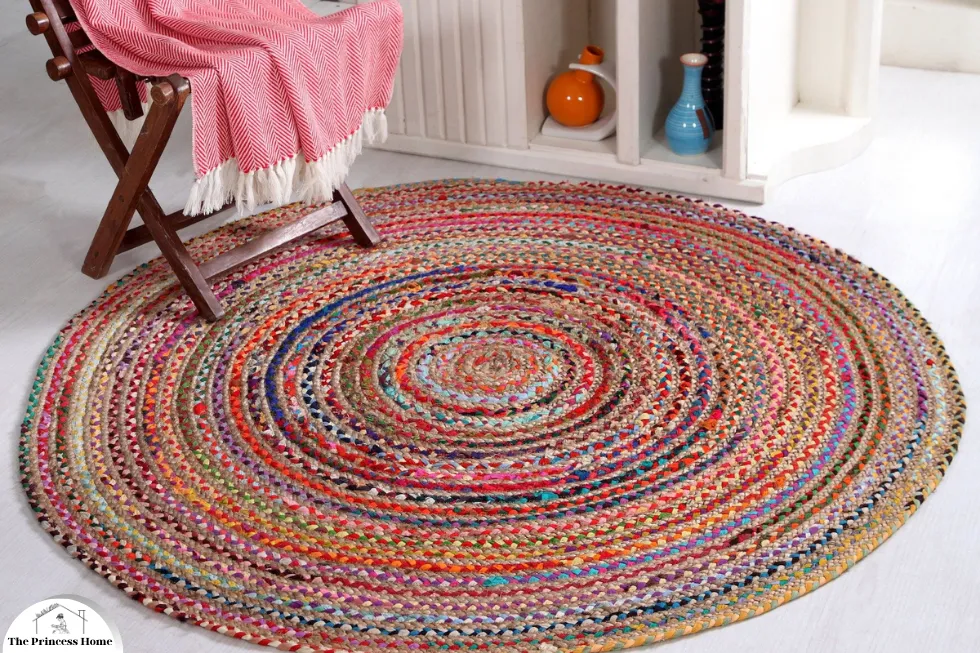
4.*Pattern Size:
The scale of the rug’s pattern is important. In a small room, large patterns can overpower the space, while in larger rooms, they can create a bold statement. Conversely, small patterns or solid colors are often used in smaller spaces to make them appear more open. the scale of a rug’s pattern can significantly impact the look and feel of a room.
Here are some considerations when selecting the pattern size of a rug:
1.Room Size:
Consider the size of the room when choosing the scale of the rug’s pattern. In smaller rooms, large-scale patterns can overwhelm the space and make it feel cramped. Opt for smaller patterns or solid colors to create a more open and airy feel. Conversely, in larger rooms, large-scale patterns can make a bold statement and add visual interest to the space.
2.Furniture Placement:
Take into account the placement of furniture when selecting the pattern size of a rug. In rooms where furniture is arranged close together, such as living rooms or dining rooms, choose rugs with smaller patterns or solid colors to avoid competing with the furniture. In rooms with more open layouts, such as entryways or open-concept spaces, larger-scale patterns can help define separate areas and create visual interest.
3.Style and Aesthetic:
Consider the overall style and aesthetic of the room when selecting the pattern size of a rug. For traditional or formal spaces, smaller-scale patterns or classic designs may be more appropriate. In contemporary or eclectic spaces, larger-scale patterns or bold geometric designs can make a dramatic statement.
4.Visual Balance:
Strive for visual balance when selecting the pattern size of a rug. If you have other bold or busy patterns in the room, opt for a rug with a simpler pattern or solid color to create harmony and prevent the space from feeling too cluttered. Conversely, if the room features mostly solid colors or minimal patterns, a rug with a larger-scale pattern can add visual interest and personality.
5.Personal Preference:
Ultimately, your personal preference and style should guide your choice of pattern size for a rug. Choose a pattern size that resonates with you and complements the overall look and feel of the room. Don’t be afraid to mix and match patterns to create a unique and dynamic space that reflects your personality and taste.
By considering factors such as room size, furniture placement, style, visual balance, and personal preference, you can select a rug with the perfect pattern size to enhance the overall look and feel of your space and create a harmonious and inviting atmosphere.
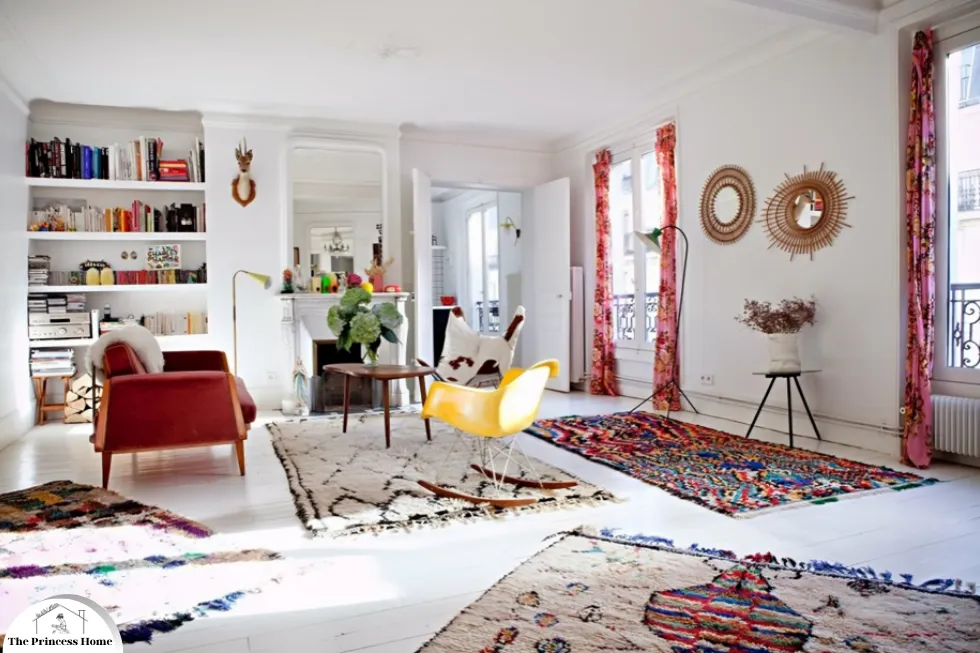
5.*Multiple Rugs in One Room:
In larger rooms, you might opt for multiple rugs to define different zones or seating areas within the same room. Just ensure that the rugs coordinate in terms of style and color. Using multiple rugs in one room is a fantastic way to define different zones or seating areas, add visual interest, and create a cohesive and layered look.
Here are some tips for effectively incorporating multiple rugs in one room:
1.Define Zones:
Use rugs to define separate zones or functional areas within the room, such as a seating area, dining area, or reading nook. Place one rug under the main furniture grouping, such as the sofa and coffee table in a living room, and another rug under a dining table or accent seating area to delineate each zone.
2.Coordinate Style &Color:
Ensure that the rugs coordinate in terms of style, color, and pattern to create a cohesive and harmonious look. Choose rugs that complement each other in terms of design aesthetic and color palette, while still allowing each rug to stand out as a distinct focal point within the room.
3.Consider Size &Shape:
Pay attention to the size and shape of each rug in relation to the furniture and the room layout. The rugs should be appropriately sized to fit the respective zones or seating areas and complement the scale and proportion of the furniture and the room as a whole.
4.Create Visual Flow:
Aim for visual flow and continuity between the rugs to create a sense of cohesion and unity within the room. Consider how the rugs interact with each other and the overall layout of the space to ensure a seamless transition from one area to the next.
5. Layering:
Experiment with layering rugs to add depth, texture, and visual interest to the room. Layering a smaller rug on top of a larger one can create a dynamic and cozy effect, especially in areas where you want to add extra warmth and comfort, such as under a reading chair or ottoman.
By strategically incorporating multiple rugs in one room, you can create a versatile and inviting space that reflects your personal style and enhances the functionality and aesthetics of the room. Just remember to coordinate the rugs in terms of style, color, and size to achieve a cohesive and harmonious look that ties the room together beautifully.
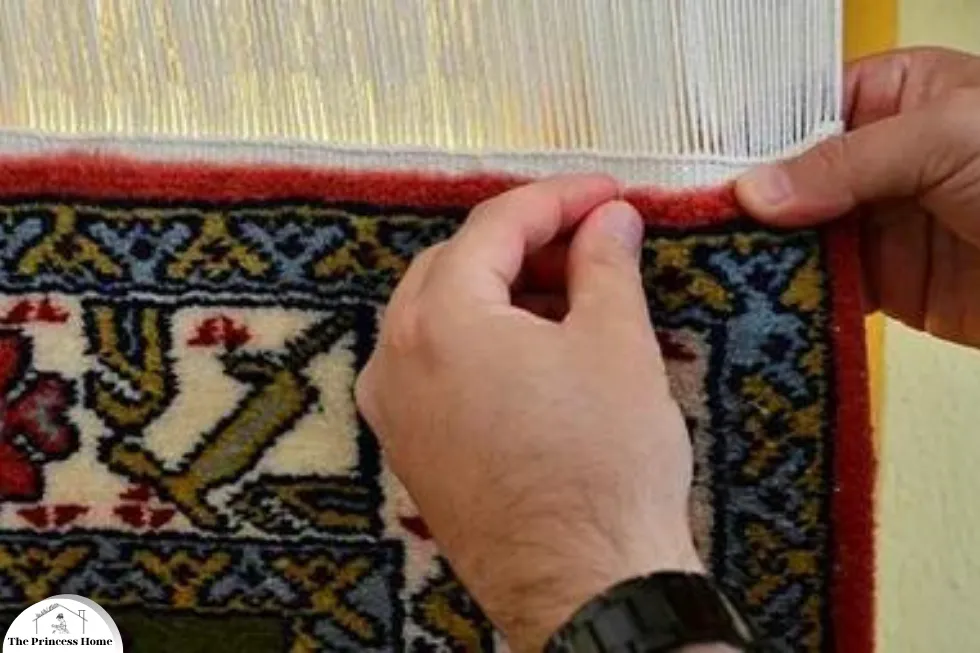
6.*Custom Rugs:
If you have a unique space or specific design requirements, consider custom-made rugs. Custom rugs can be tailored to your exact specifications, including size, shape, material, and design, ensuring a perfect fit for your space. Custom-made rugs are an excellent option for those who have unique spaces or specific design requirements that standard rugs may not accommodate.
Here are some benefits of opting for custom rugs:
1.Tailored to Your Space:
Custom rugs can be tailored to fit your exact specifications, including the size, shape, and dimensions of your space. Whether you have an irregularly shaped room, an open-concept layout, or specific furniture arrangements, custom rugs can be designed to perfectly fit your space and enhance its functionality and aesthetics.
2.Material Selection:
With custom rugs, you have the flexibility to choose the materials and fibers that best suit your needs and preferences. Whether you prefer natural fibers like wool, silk, or cotton, or synthetic materials like polypropylene or nylon, custom rugs can be made from a wide range of materials to suit your lifestyle, budget, and design aesthetic.
3.Design Flexibility:
Custom rugs offer unparalleled design flexibility, allowing you to create a rug that reflects your personal style and complements your existing decor. Whether you prefer bold colors, intricate patterns, or subtle textures, custom rugs can be designed to match your vision and enhance the beauty and uniqueness of your space.
4.Quality &Craftsmanship:
Custom rugs are typically made with the highest quality materials and craftsmanship, ensuring a durable and long-lasting flooring solution for your home. Skilled artisans and craftsmen work closely with you to bring your vision to life and create a rug that meets your exact specifications and quality standards.
5.One-of-a-Kind Piece:
Perhaps the most significant benefit of custom rugs is that they allow you to create a one-of-a-kind piece that is unique to your home. Unlike mass-produced rugs, custom rugs are made specifically for you and your space, making them a special and meaningful addition to your home decor.
While custom rugs may require a longer lead time and investment compared to off-the-shelf options, the benefits of a perfectly tailored rug that reflects your style and meets your specific needs make it a worthwhile investment. Whether you’re furnishing a residential space or a commercial environment, custom rugs offer endless possibilities for creating a truly personalized and distinctive look that sets your space apart.
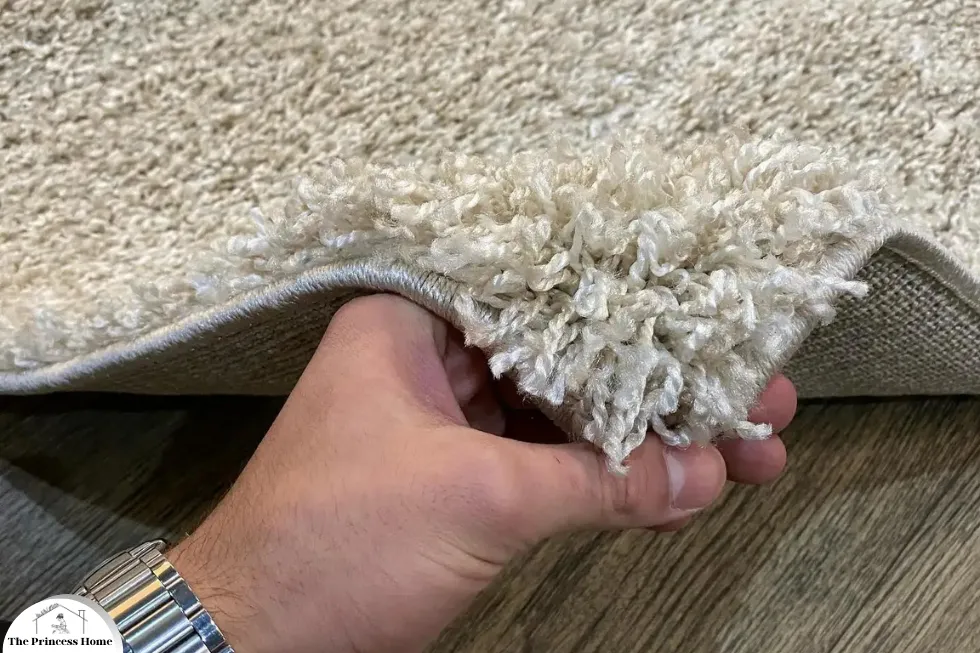
7.*Rug Texture:
Texture can make a significant difference in how a rug feels and looks in your space. Consider high-pile or shaggy rugs for a luxurious and soft touch, or flat-weave and low-pile rugs for a more modern and easy-to-clean option. the texture of a rug can have a profound impact on the overall look and feel of a space.
Here are some considerations when selecting rug texture:
1.High-Pile or Shaggy Rugs:
High-pile or shaggy rugs are plush, luxurious, and incredibly soft underfoot. They add warmth and coziness to a room, making them ideal for living rooms, bedrooms, and cozy seating areas where comfort is paramount. High-pile rugs also help absorb sound and provide a sense of luxury and indulgence.
2.Flatweave Rugs:
Flatweave rugs have a low-profile construction and a smooth texture, making them easy to clean and maintain. They are ideal for high-traffic areas like entryways, hallways, and kitchens, as they are less likely to trap dirt, dust, and debris. Flatweave rugs are also a great choice for modern and minimalist interiors, as they provide a clean and streamlined look.
3.Natural Fiber Rugs:
Natural fiber rugs, such as sisal, jute, and seagrass, have a textured and tactile feel that adds warmth and character to a room. They are durable, eco-friendly, and versatile, making them suitable for a wide range of design styles and spaces. Natural fiber rugs are perfect for adding a touch of organic beauty to your home while also providing a durable and practical flooring solution.
4.Patterned Rugs:
Patterned rugs add visual interest and texture to a room, whether through intricate designs, geometric patterns, or subtle motifs. Consider rugs with raised or carved patterns for added depth and dimension, or opt for textured materials like wool or cotton to enhance the tactile appeal of the rug.
5.Layering Textures:
Experiment with layering different textures to create a dynamic and visually engaging space. Pair a plush shaggy rug with a smooth leather or velvet sofa for contrast, or layer a natural fiber rug over a soft, plush carpet for added texture and visual interest.
Ultimately, the texture of a rug should complement the overall style and aesthetic of the room while also meeting your practical needs and preferences. Whether you prefer the luxurious softness of a high-pile rug or the durability and ease of maintenance of a flatweave rug, selecting the right texture can enhance the comfort, functionality, and visual appeal of your space.

8.*Cultural & Regional :
Explore rugs that reflect the culture and heritage of different regions. Persian, Turkish, Moroccan, and Tibetan rugs, among others, each have unique designs and craftsmanship that can add a cultural or artistic touch to your home. Rugs from different regions carry rich cultural and artistic significance, reflecting the traditions, craftsmanship, and heritage of their respective cultures.
Here’s a brief overview of some culturally significant rugs:
1.Persian Rugs:
Persian rugs, also known as Iranian rugs, are renowned for their intricate designs, rich colors, and fine craftsmanship. These rugs often feature elaborate motifs, floral patterns, and geometric designs, each with its own symbolism and meaning. Persian rugs are hand-knotted using traditional techniques passed down through generations, making them exquisite works of art and prized possessions.
2.Turkish Rugs:
Turkish rugs are celebrated for their timeless beauty, durability, and craftsmanship. They come in a variety of styles, including Kilims, which are flat-woven rugs with bold geometric patterns, and Oushak rugs, which feature soft colors and intricate designs. Turkish rugs are handcrafted using traditional techniques and natural materials, reflecting the cultural heritage and artistic traditions of Turkey.
3.Moroccan Rugs:
Moroccan rugs, particularly those from the Atlas Mountains region, are known for their tribal designs, geometric patterns, and vibrant colors. These rugs are handwoven by Berber women using age-old techniques, resulting in unique and intricate designs that reflect the cultural identity and artistic expression of the Berber people. Moroccan rugs add warmth, texture, and character to any space, evoking the spirit of North African craftsmanship and heritage.
4.Tibetan Rugs:
Tibetan rugs are prized for their exceptional quality, craftsmanship, and spiritual significance. Handcrafted by Tibetan artisans using high-quality wool and natural dyes, these rugs often feature intricate Tibetan motifs, Buddhist symbols, and auspicious designs that carry deep spiritual meaning. Tibetan rugs are not only beautiful works of art but also symbols of Tibetan culture, tradition, and spirituality.
5.Native American Rugs:
Native American rugs, such as Navajo rugs and Pueblo blankets, are cherished for their intricate designs, vibrant colors, and cultural significance. These rugs are handwoven by Native American artisans using traditional techniques and natural materials, reflecting the artistic traditions, storytelling, and spirituality of Indigenous peoples. Navajo rugs, in particular, are prized for their geometric patterns and symbolic motifs, which often represent elements of nature, tribal rituals, and sacred ceremonies.
By incorporating rugs from different regions into your home decor, you can not only enhance the beauty and style of your space but also celebrate the rich cultural heritage and artistic traditions of diverse communities around the world. Whether you choose a Persian rug, a Turkish Kilim, a Moroccan Beni Ourain, or a Tibetan mandala rug, each rug tells a unique story and adds a touch of cultural and artistic sophistication to your home.
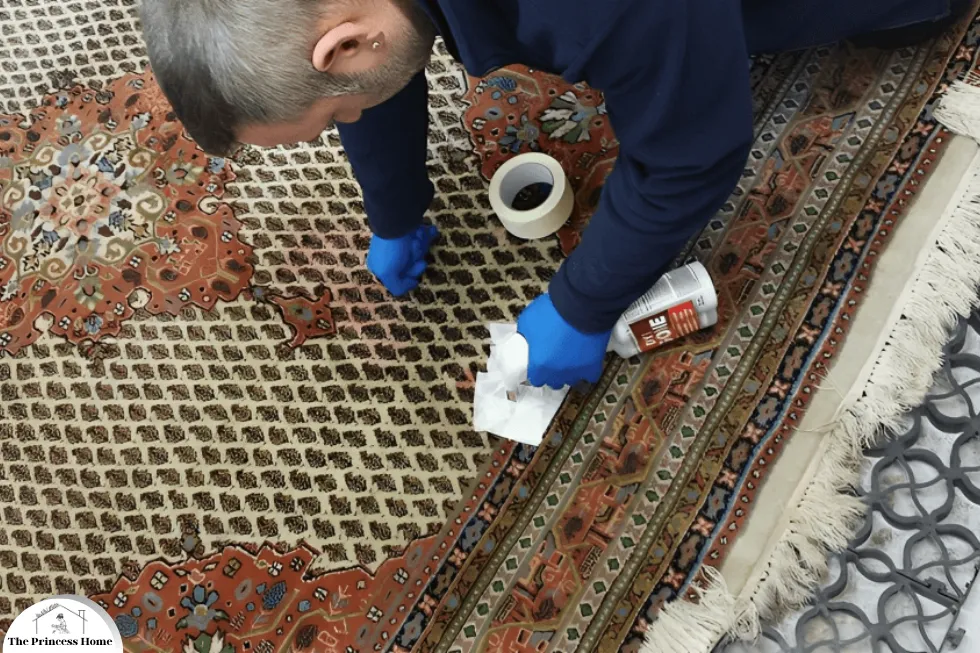
9.*Rug Care & Cleaning:
Understanding how to care for your rug is crucial for its longevity. Follow the manufacturer’s recommendations for cleaning and maintenance. Some rugs can be spot-cleaned, while others may require professional cleaning. Proper care and maintenance are essential for preserving the beauty and longevity of your rug.
Here are some general tips for rug care and cleaning:
1.Regular Vacuuming:
Vacuum your rug regularly to remove dust, dirt, and debris that can accumulate over time. Use a vacuum cleaner with a brush attachment or a vacuum specifically designed for rugs to avoid damaging the fibers. Be sure to vacuum both sides of the rug to remove dirt trapped deep within the fibers.
2.Rotate Your Rug:
Rotate your rug periodically to ensure even wear and fading. Rotate it 180 degrees every six months, especially if it’s exposed to direct sunlight or heavy foot traffic. This helps prevent uneven wear and maintains the rug’s appearance over time.
3.Spot Cleaning:
Attend to spills and stains promptly to prevent them from setting into the fibers. Blot spills with a clean cloth or paper towel to absorb as much liquid as possible, then gently blot the area with a mixture of mild detergent and water. Avoid rubbing or scrubbing the stain, as this can damage the fibers. Test any cleaning solution on a small, inconspicuous area of the rug first to ensure it doesn’t cause discoloration or damage.
4.Professional Cleaning:
Depending on the type of rug and its construction, you may need to have it professionally cleaned periodically. Some rugs, such as wool or silk rugs, may require specialized cleaning methods to maintain their appearance and integrity. Consult the manufacturer’s recommendations or hire a professional rug cleaner who specializes in cleaning the type of rug you have.
5.Protect Your Rug:
Use rug pads underneath your rug to provide cushioning, prevent slipping, and protect the rug and the underlying flooring surface. Rug pads also help extend the life of your rug by reducing friction and wear caused by foot traffic and furniture.
6.Avoid Direct Sunlight:
Direct sunlight can cause fading and discoloration of your rug over time. Place your rug away from windows or use curtains, blinds, or UV-blocking window film to protect it from prolonged exposure to sunlight.
7.Air Out Your Rug:
Occasionally, take your rug outdoors and hang it over a railing or clothesline to air it out and remove any trapped odors or moisture. This helps freshen up the rug and prevent musty odors from developing.
By following these tips for rug care and cleaning, you can keep your rug looking beautiful and well-maintained for years to come. Remember to always follow the manufacturer’s recommendations and consult a professional cleaner if you’re unsure about how to care for your specific type of rug.
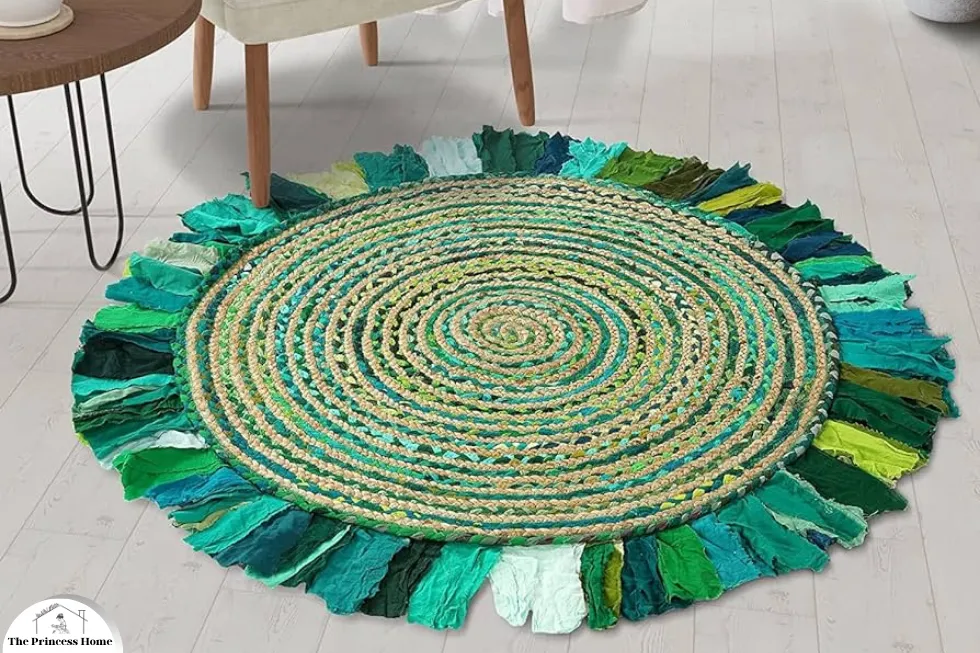
10.*Eco-Friendly Options:
For environmentally conscious consumers, consider eco-friendly rug options made from sustainable materials like bamboo, jute, or organic cotton. These choices not only contribute to a greener planet but also add a natural and rustic element to your decor.
In conclusion, choosing the right rug for your space involves a careful balance of aesthetics, functionality, and personal preferences. By considering these additional ideas and factors, you’ll be better equipped to find the perfect rug that enhances the overall look and feel of your home. Whether you’re seeking a cozy, traditional rug or a bold, contemporary statement piece, there’s a rug out there that’s just right for you. Happy rug hunting!
Here are some frequently asked questions related to choosing the right rug, along with their answers:
1. How do I determine the right rug size for my room?
To determine the right rug size for your room, measure the area you want the rug to cover. In the living room, it’s common to have the front legs of furniture on the rug, extending at least 6-12 inches beyond the seating area. and the dining room, ensure the rug accommodates the table and chairs, with 4-6 feet of extra space around the table. In bedrooms, consider rugs that either fit under the bed or create a border around it.
2. What rug material is best for high-traffic areas?
For high-traffic areas, choose durable and easy-to-clean materials like nylon, polypropylene, or a blend of synthetic fibers. These materials are resistant to stains, moisture, and wear and tear, making them suitable for spaces with heavy foot traffic.
3. Are silk rugs a practical choice for everyday use?
Silk rugs are luxurious and have a beautiful sheen, but they are delicate and best suited for low-traffic areas or decorative purposes. Using them in high-traffic areas can lead to faster wear and higher maintenance.
4. Can I place a rug over wall-to-wall carpeting?
Yes, you can place a rug over wall-to-wall carpeting. It can add style and definition to the space. However, ensure the rug is of an appropriate size, and use a rug pad to prevent slipping.
5. How do I clean and maintain my rug?
The cleaning and maintenance of your rug depend on its material. Vacuum regularly to prevent dirt buildup. For spills, blot (don’t rub) with a clean cloth and follow care instructions on the rug’s label. Consider professional cleaning for deep cleaning or delicate materials.
6. What’s the difference between a hand-knotted and machine-made rug?
Hand-knotted rugs are labor-intensive, handcrafted pieces known for their durability and intricate designs. Machine-made rugs are more affordable and produced by automated processes. Hand-knotted rugs are often considered higher quality and can be more expensive.
7. Can I layer rugs for a unique look?
Yes, layering rugs is a popular trend. You can layer a smaller rug over a larger one to add depth and style. This technique allows you to mix textures and patterns, creating a unique and cozy effect in your space.
8. What’s the best way to choose a rug that complements my existing decor?
When selecting a rug, consider your room’s color scheme, furniture, and decor. Choose a rug that complements or contrasts with the existing elements. Neutral tones are versatile, while patterns and colors can add a pop of character to your space.
9. Are there eco-friendly rug options available?
Yes, there are eco-friendly rug options made from sustainable materials like bamboo, jute, organic cotton, and recycled fibers. These rugs not only contribute to environmental sustainability but also add a natural and rustic element to your decor.
10. What should I consider when shopping for rugs online?
When shopping for rugs online, read product descriptions and reviews carefully. Pay attention to dimensions, materials, and return policies. Order rug samples or swatches to ensure the rug’s color and texture match your expectations.


